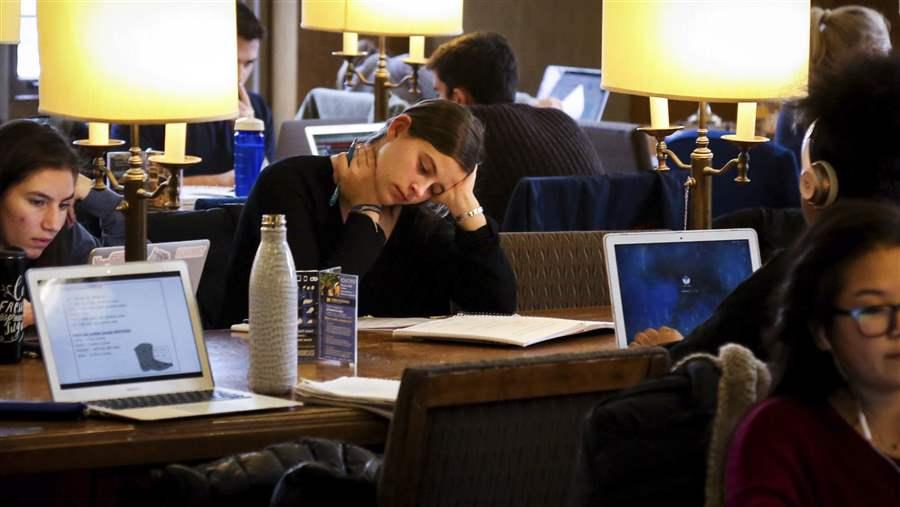By MARSHA MERCER
President Donald Trump faces a
tough foe as he prepares for his first State of the Union address Tuesday – and
it’s not Chuck Schumer, the Senate Democratic leader who lately has seemed a paper
tiger.
No, Trump’s worst enemy is himself.
The showman has never learned to get out of his own way. His outsized personality
casts shadows over everything he touches, even, unfortunately for him, policies
people like.
His job approval rating has set
records – for being historically low. Only 36 percent approve of the job Trump
is doing, the latest Washington Post-ABC News and Gallup polls report. A year after their inaugurations, Barack Obama
was at 50 percent, and George W. Bush achieved a stunning 82 percent.
Trump faces a dilemma few, if
any, of his predecessors have faced. People are happier with the economy than they’ve
been in decades -- but they don’t credit Trump or his policies.
Fifty-eight percent of Americans
now say the economy is excellent or good – the highest number in 17 years, the Post-ABC
poll said. Traditionally, a president gets credit for a good economy, but so
far that linkage has been broken, even though Trump touts the economy at nearly
every event.
Trump has become the Rodney
Dangerfield of presidents. He gets no respect.
Only 38 percent of people say the
Trump administration deserves a great deal or good amount of credit for the
economy, while 50 percent say the Obama administration deserves a great deal or
good amount of credit, the Post-ABC poll found.
If Trump didn’t boast so much, in
effect begging for praise, he might get more. His habit of blaming others for
his misfortunes – Democrats, the FBI, Hollywood, the mainstream media – also makes
him look petty.
Instead of whining, he could up his
own vocabulary and use restraint while tweeting. Sadly, this is as obvious as
it is increasingly unlikely.
Americans have become accustomed
to the daily diet of boasts, insults and threats from the White House. Many see
Trump’s drama as his way of distracting attention from the Russia investigation,
but these ploys also overshadow positive trends in employment and the stock
market.
Trump has maintained the support
of his base but has yet to win over Democrats or independent voters, polls
show.
Democrats still struggle to do
more than complain about Trump. Some members of the Congressional Black Caucus
plan to boycott the speech. Democrats who do attend may wear black in
solidarity with the #MeToo movement.
If they’re wise, though, no
matter what Trump says, Democrats will maintain decorum. No good would come of
stooping to the level of Rep. Joe Wilson, Republican of South Carolina, who
shouted “You lie!” at Obama during a joint session speech on health care in 2009.
We’re likely to see Trump extol
his first-year achievements, such as the tax law, reduced regulations, jobs he
says are returning to the United States and judicial appointments. He may offer
an olive branch or two.
He may find moderation more
productive in the long term as he finally turns to a major infrastructure improvement
plan, a subject that’s dear to Democratic as well as Republican hearts.
He could take another step toward
improving his image with Democrats with a solid proposal on the Deferred Action
for Childhood Arrivals program, expected to be released Monday.
Schumer
said negotiating with this White House is like “negotiating with Jell-o.” But Trump’s comments Wednesday about a multi-year path
to citizenship for the immigrants known as Dreamers show compromise may be
possible.
Helping Dreamers would be
popular, even if it comes with the high cost of billions for a border wall.
Politics permeate State of the
Union addresses, and this one will kick off the 2018 congressional campaigns. Trump’s
re-election campaign has already run a tough ad against Democrats regarding
immigration, so, like it or not, the 2020 presidential campaign is upon us as
well.
Trump says he needs more Republicans
in Congress to help him pass his agenda, but Democrats, energized by special
election victories, hope for a blue wave election, possibly retaking control of
the House.
A little restraint could do Trump
a world of good legislatively. But only if he can curb his instincts for
bare-knuckles politicking.
30
